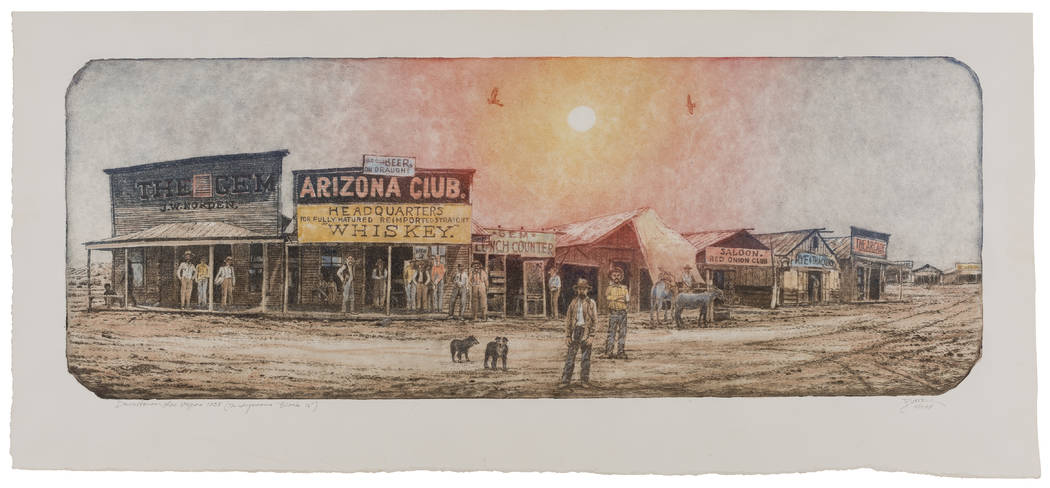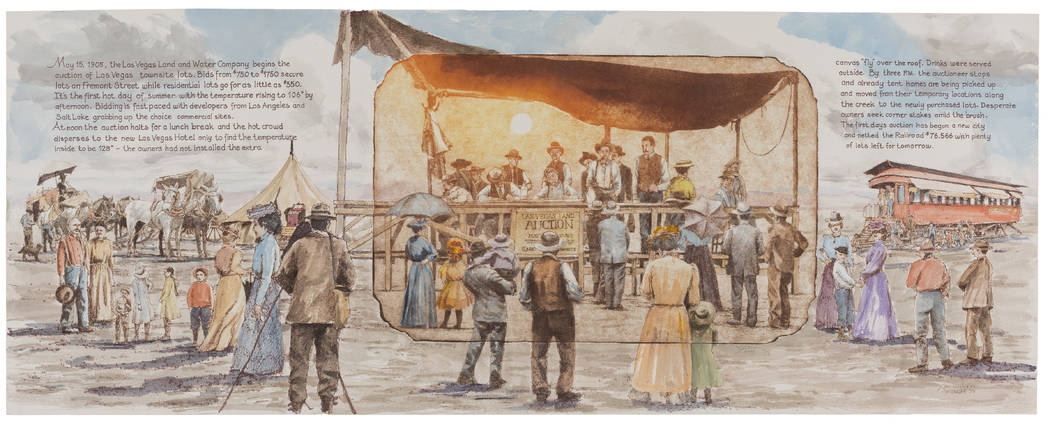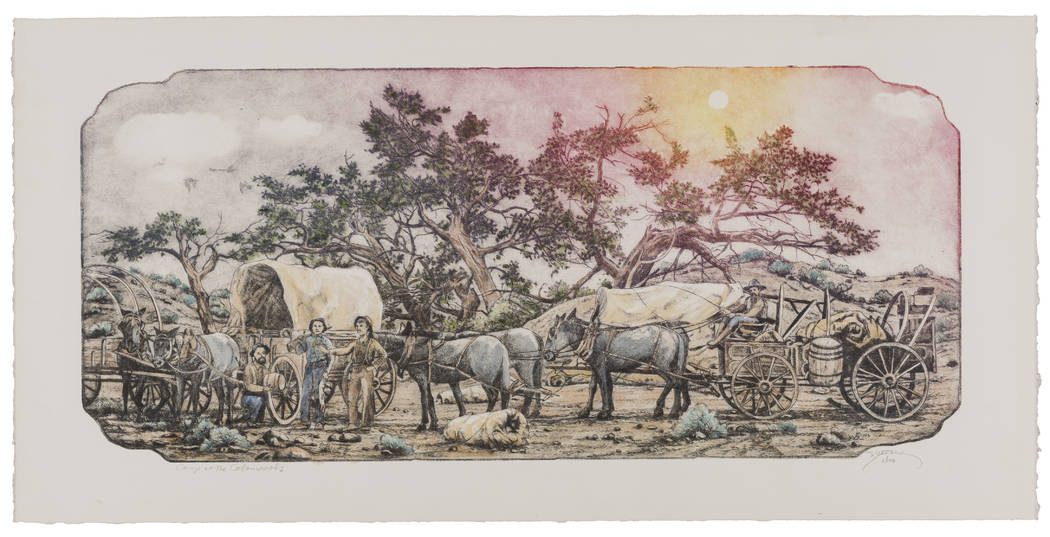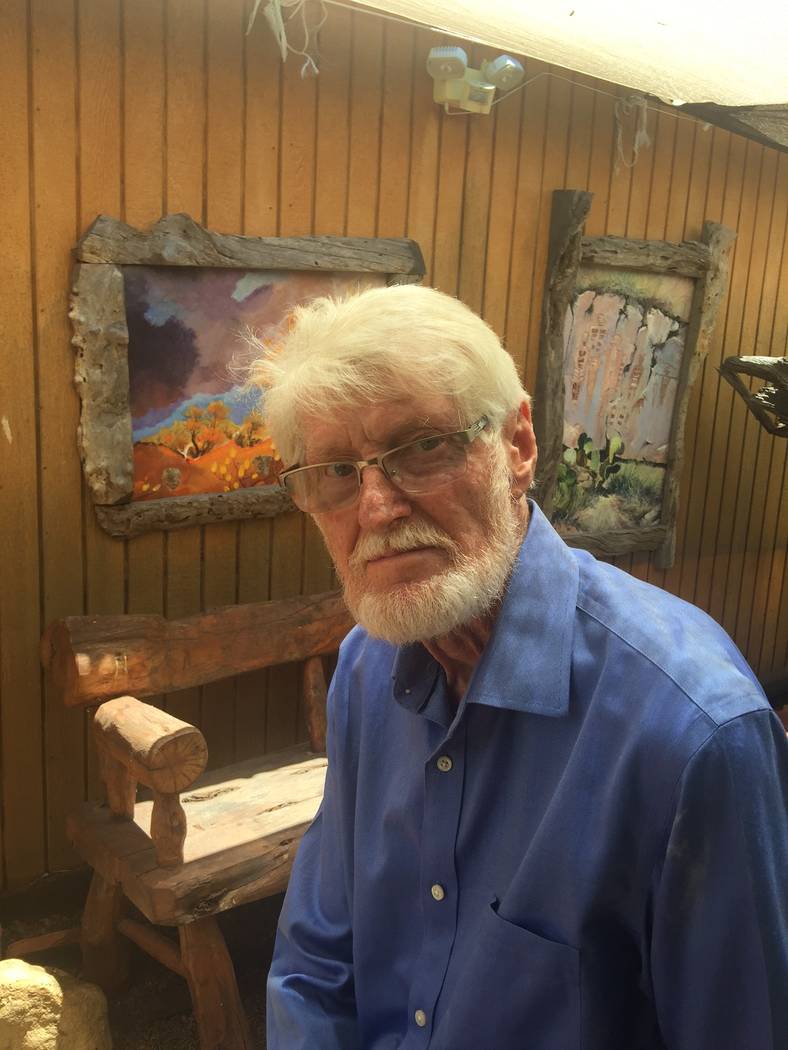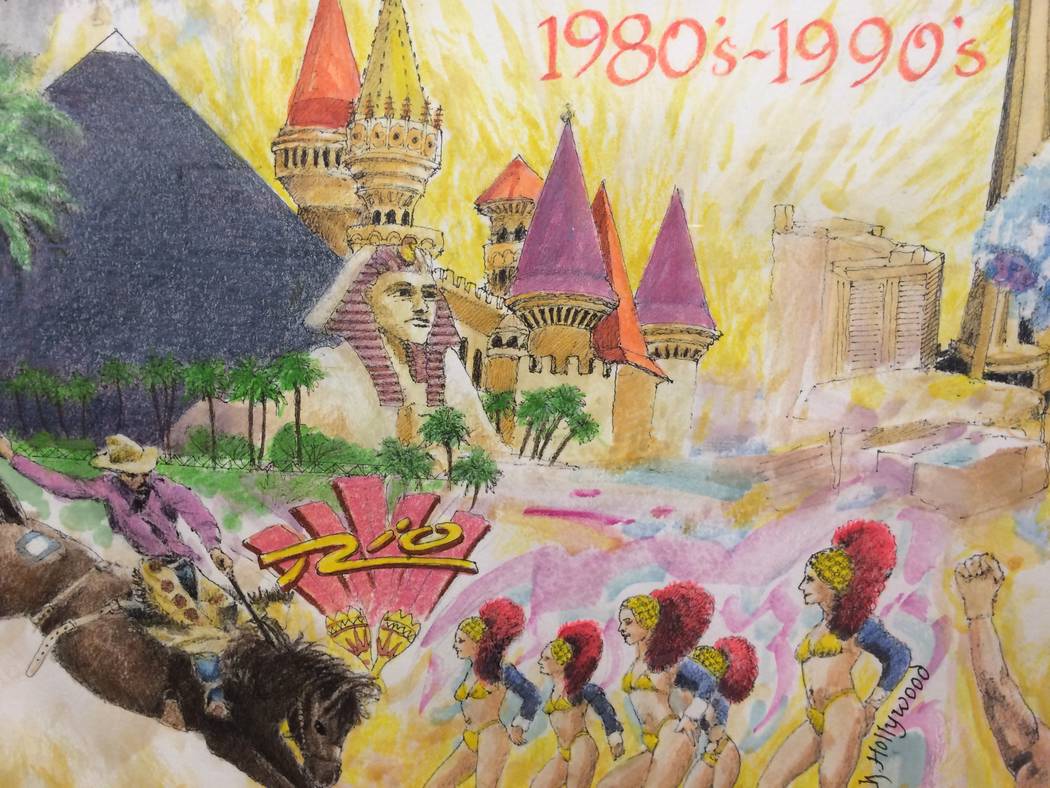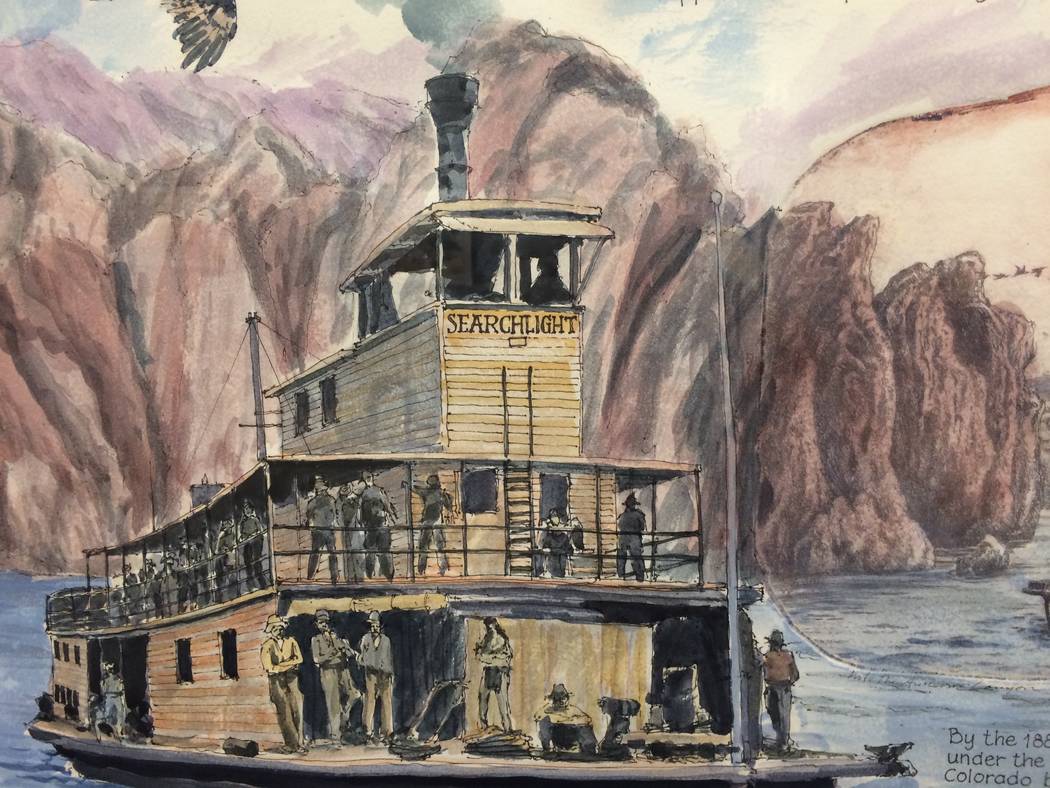Springs Preserve exhibit shows artist’s ‘Vegas Valley Memories’
Roy Purcell doesn’t live here anymore.
But Las Vegas lives in him, as “Vegas Valley Memories: The Art of Roy Purcell” demonstrates.
The exhibit, which continues at the Springs Preserve’s Big Springs Gallery through Oct. 8, explores Southern Nevada history through 13 artworks that mix mediums (from oil and watercolor paints to pencil, pen-and-ink and etching) and written text to convey Las Vegas’ transformation from remote desert to desert metropolis.
Most of them were created during Purcell’s 35 years as a Southern Nevadan. He moved here in 1970 to become director of the now-gone Southern Nevada Museum in Henderson.
“I was going to leave after I set up the museum,” says Purcell, who now lives near Tucson in Tubac, Arizona, where he has his own gallery. “Back then, I thought, ‘Who wants to live in Las Vegas?” Some “35 years later, I finally left.”
Purcell spent four years at the museum, then began working as a freelance artist. A local insurance executive commissioned him to create paintings depicting Las Vegas history.
“I got started on it,” Purcell recalls, “and I just kept going.”
A few of the featured works have no text — other than their titles — but most combine written history with Purcell’s etchings, sketches and paintings, notes Aaron Micallef, the preserve’s exhibits curator.
With his affinity for a variety of artistic media, “he’s kind of all over the place,” Micallef observes. And Purcell’s use of text reminds him of “a modern-day graphic novel.”
In many works, Purcell would create an etching and print it in the center of a 4-foot piece of paper, then augment the center image with “pen and ink, then watercolor, then I would write the storyline,” the artist explains, citing “my love of different media.”
The first painting in the exhibit focuses on 1829 to the 1890s, as explorers and missionaries arrived in the area. The land auction of 1905 that marked Las Vegas’ start as a town (re-created in the Springs Preserve’s Boomtown 1905 area) and the development of Fremont Street in the 1920s inspire other paintings. Another contrasts the “Glamour in Ragtown,” depicting tent-dwellers in Boulder City during the construction of what became Hoover Dam, with a spinning casino roulette wheel, made legal in 1931.
Gambling steps into the spotlight as the chronology continues, depicting the memorable marquees of such now-vanished Strip resorts as the Stardust, Dunes and Desert Inn, plus Las Vegas luminaries legendary (Liberace, Elvis Presley, Frank Sinatra, Howard Hughes, Benjamin “Bugsy” Siegel) and not quite (Miss Atomic Cloud, dancer Juliet Prowse).
Most of the featured paintings were donated to the Springs Preserve by Allen and Lisa Kaercher of Kaercher Campbell and Associates Insurance Brokerage, which originally commissioned the works.
But because Purcell created his final painting of the series in 2002 — ancient history by Las Vegas standards — Springs Preserve officials commissioned two more works, Micallef says.
One of the commissioned paintings, completed in 2016, focuses on Las Vegas as “The Century Turns,” with images of Strip headliners Celine Dion and Criss Angel — along with the outline of a wheel of fortune and text that includes the question “Where are we going so fast and what fate awaits us?”
The other depicts the Springs Preserve, which is celebrating its 10th anniversary.
Alongside images that reflect the preserve’s Desert Living Center and gardens, Purcell’s painting also captures what the area must have looked like long before Las Vegas existed.
“I love the desert, the natural environment,” Purcell says. “The springs themselves are like a focal point.”
Roy Purcell remembers Las Vegas, and why he left
Roy Purcell’s “Vegas Valley Memories” exhibit — at the Springs Preserve through Oct. 8 — reflects his 35 years in Las Vegas.
But it also helps explain why he left in 2004.
“Las Vegas was very good for me, but I wanted to focus on painting what I wanted” rather than commissioned works, he says in a telephone interview from Tubac, Arizona, where he has a gallery. Although he “had a lot of friends and clients there,” he decided before he moved that he needed to “jump-start my career” because “I was getting a little antsy.”
A consultant told him he had “tremendous talent” and “a lot to say,” he recalls, but advised him that “the art world does not appreciate any art coming out of Las Vegas,” which was then viewed as the home of Elvis-on-velvet decor.
The consultant recommended that Purcell move “to a place that values art and set up your own gallery,” so he did exactly that, settling south of Tucson, in Tubac.
“I had a good career in Vegas,” he says. “I was making good money, but I had been there long enough.”
And, Las Vegas being Las Vegas, the changes just keep on coming.
Purcell doesn’t comment on those changes in our interview.
But the texts of certain paintings featured in “Vegas Valley Memories” reflect his changing attitude.
A 2002 painting focuses on the Strip’s megaresort boom of the 1980s and ’90s, “as one after another major hotel-casino unfolds … each vying to outdo the last in size and significance” along “the exuberant and colorful Strip,” according to the painting’s text.
By 2016, however, another painting focusing on the Strip inspires him to ponder a time when “the monuments we raise, twisted and askew, melt and fade, mingling with the sand … Are we prophetic in our arrogance? Are we blindly proclaiming our future? Leaving our heritage but a heap of rubble rusting in the desert sand?”
Contact Carol Cling at ccling@reviewjournal.com or 702-383-0272. Follow @CarolSCling on Twitter.
Preview
What: "Vegas Valley Memories: The Art of Roy Purcell"
When: 9 a.m.to 5 p.m. daily through Oct. 8
Where: Big Springs Gallery, Springs Preserve, 333 S. Valley View Blvd.
Tickets: Springs Preserve general admission $4.95-$9.95 for Nevada residents,$8.95-$18.95 non-residents (www.springspreserve.org)



